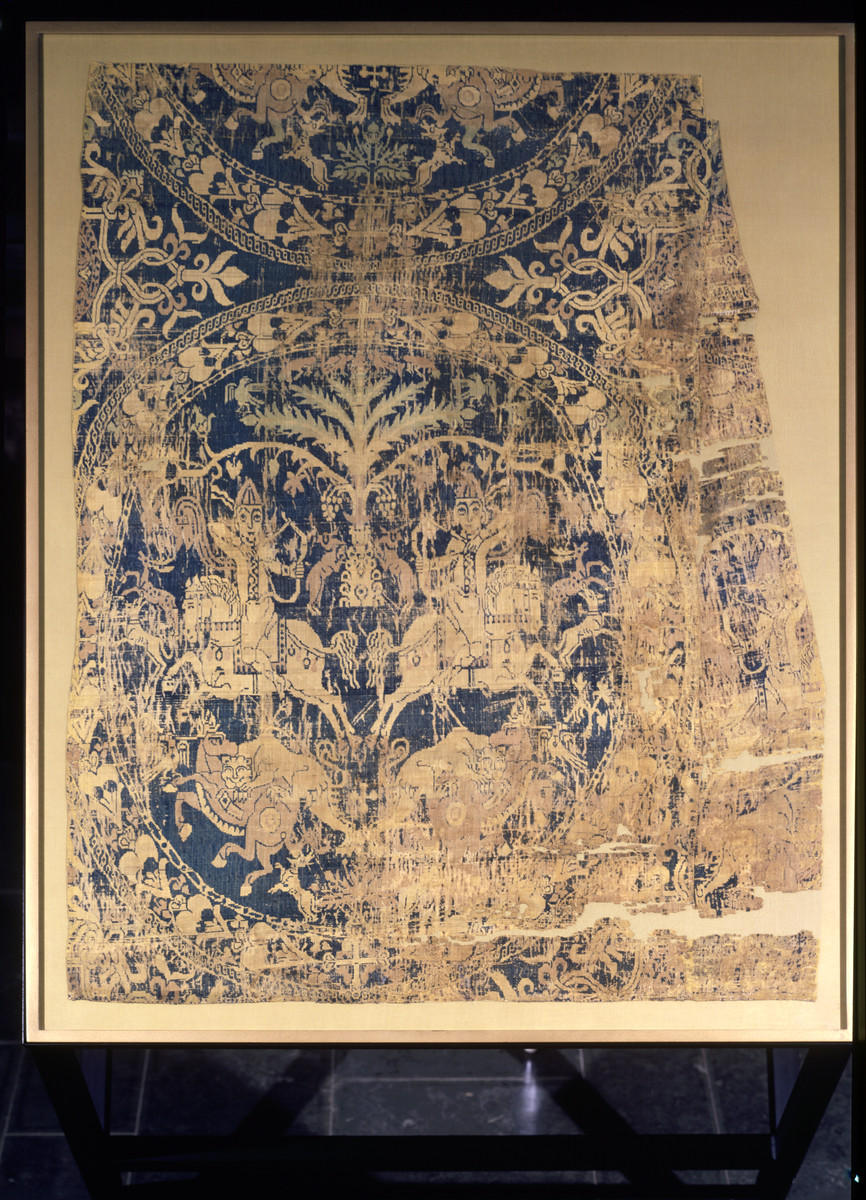Create an Amazon Wedding Registry

Try Amazon Audible Plus
Arab, Syrian or Byzantine Horse Archer, 7th-8th Centuries, Cologne
Barham Gur Shoots a Lion and an Onager with One Arrow

A larger image of this Arab, Syrian or Byzantine Horse Archer, on a silk textile, from the grave of St Cunibert in the Erzbischöfliches Museum, Cologne.
Stylistic-geographical classification: Byzantine or Syrian
Dating: 786/815 Subject term: textile fabric
Type: Textile Art Material / Technology: Silk
Collection: Cologne, Archbishop's Diocesan Museum, inventory no. P 1053-9
Source: Rheinisches Bildarchiv Köln
Referenced as Plate CVI, facing p.336 Vol. 2 The military technology of classical Islam by David Nicolle
Silk fabric from the Shrine of St. Kunibert, 8th century AD Syrian, Erzbischöfliches Museum, Cologne.
Also referenced as figure 119.
Vol. 2, p.346: Other definite or presumed Umayyad sources show horse-archers (Figs.
119, 120, 121, 122, 338 and 339),
most of whom wear no visible armour except for helmets.
120. Fresco from Qaṣr al Ḥayr al Gharbī, mid-8th century AD, Syrian, National Museum, Damascus.
121. Fragmented statue from Qaṣr al Ḥayr al Gharbī, mid-8th century AD, Syrian, National Museum, Damascus.
122. Frescoes from Quṣayr ʿAmra, mid-8th century AD, Syrian, in situ, Jordan.
338. Stucco plaque, 7th-8th centuries AD, Umayyad (?), Museum für Islamische Kunst no. 4424, West Berlin.
339. Stucco plaque, 7th-8th centuries AD, Umayyad (?) Metropolitan Museum no, 40.58, New York.
Possibly woven in Constantinople using an eastern motif, for the western market.
Compare this to other Arab, Syrian or Byzantine Horse Archers, 7th-8th Centuries, possibly woven in Constantinople using an eastern motif
Byzantine Illustrations of Costume and Soldiers
Illustrations of Arab Costume and Soldiers

